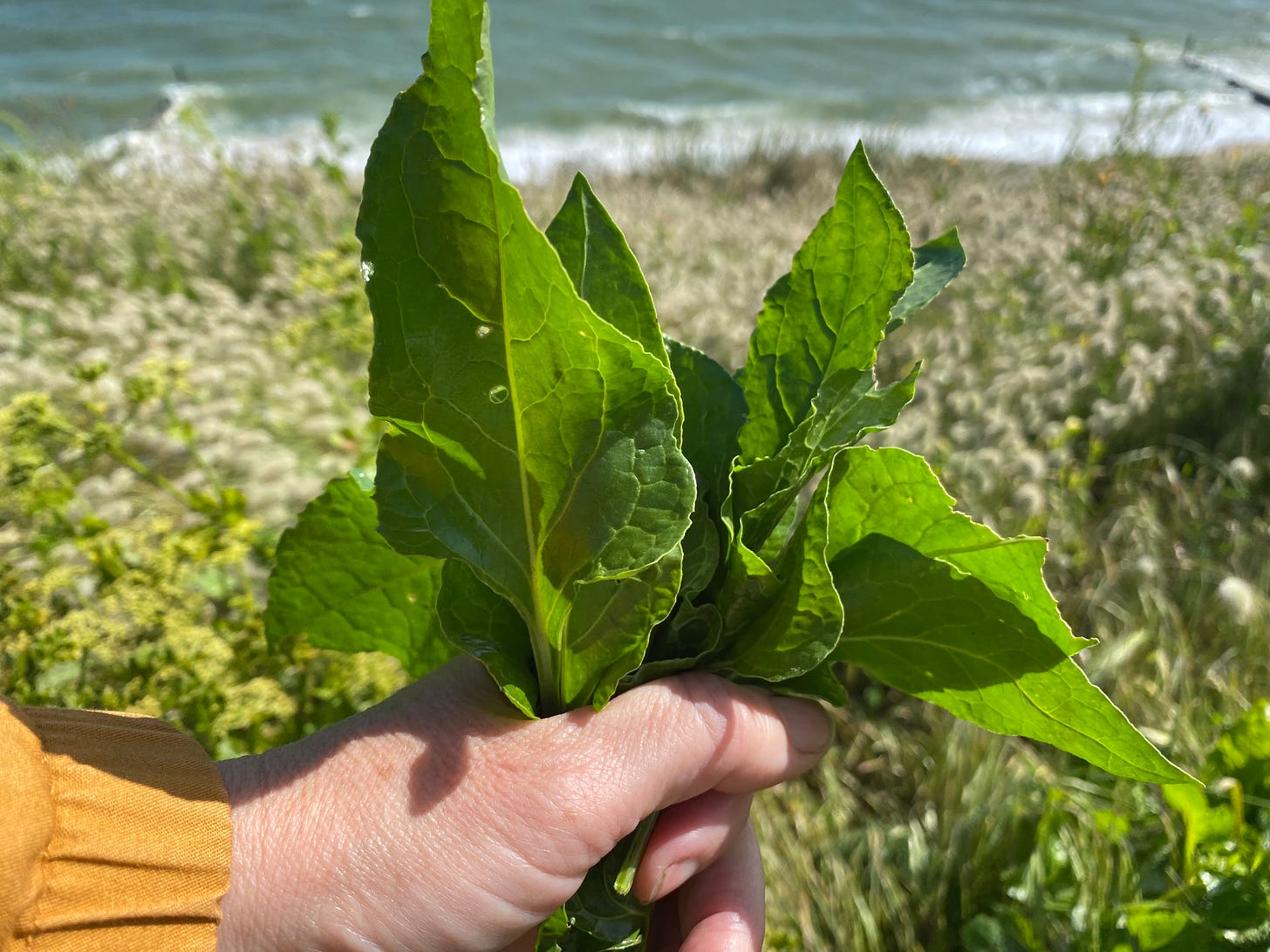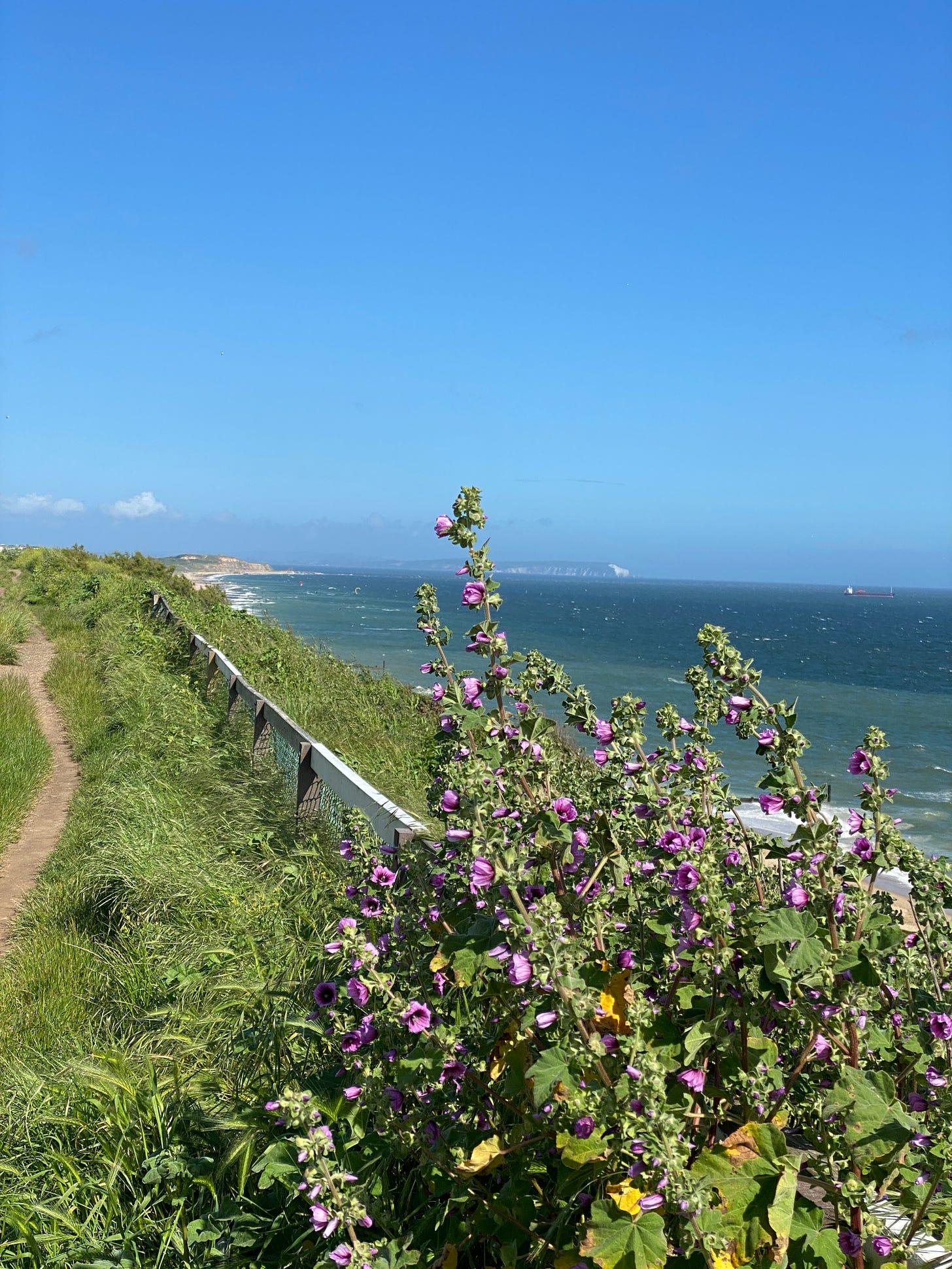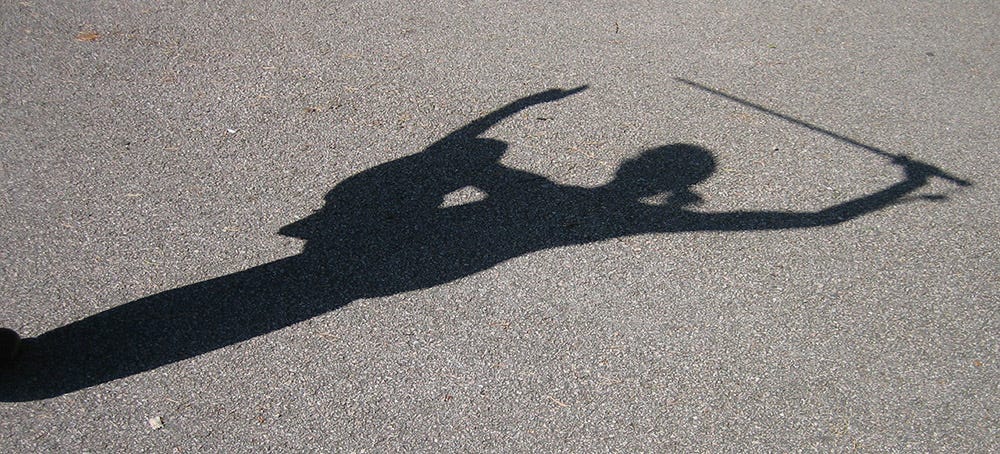See With the Body Eye
An Introduction to upcoming essays on embodied memory and life-long meaningful movement. Plus, a pilgrimage on my doorstep.
It is Sunday afternoon, and the light slants in from the west through my glass of water and onto this laptop. It’s a between-essays week so I have been treating myself to catching up with other writers here on Substack, rereading aloud a few chapters of Invisible Cities by Italo Calvino and having Carry On, Jeeves by PG Wodehouse read to me, with full characterisation and voices. I have never laughed so hard at bedtime.1
Above are the clifftop grasses this afternoon, in a stiff breeze that was lifting seagulls and paragliders alike.
Among several great pieces I read this week was this one from and
about encouraging people to have ‘three dimensional memory’ rather than the flat, thin version offered us by the tech overlords, where we have handed all our images, memories and data to machines to recall for us. So much easier! So efficient! So unwise. I agree wholeheartedly with Ruth and Peco’s points and they prompted me to return to notes I have made about similar rigour, joy and perseverance in physical practices.In the too-long (paper) lists of things I want to write about here at Uncivil Savant, a large section is devoted to embodiment, learning, movement and their relationship to words and thinking, as well as how important they are to a good life. I take that to be an existence that our ancestors would recognise as full, rather than seeing us as strange slaves to chairs, (never mind the machines). The irony of me sitting on a chair to write this for you is not lost on me.2
So, this week I will attempt to wrangle a large amount of notes, 25 years of T’ai Chi, 18 years of teaching movement and a lifetime of being both book-worm and word-hoarder. What I plan to do is outline why I think a movement practice is vitally important to people, especially thoughtful, bookish people… like you, perhaps. How movement can strengthen memory, stave off dementia (there are good studies on this), prevent the narrowing of life that comes for many elders with a fall. And finally explain why memory is sometimes positional and place-dependent, as with memories triggered by, say, scents. There is a good reason you forget what you came into the room for, after all.

On a more detailed front, I’ll speak for handwork as an antidote to the equivalent of ‘dumbing down’ that has been measured in manual skill levels over the last couple of decades, and suggest ways to remedy this. I hope you’ll find it as rewarding as memorising poems, or even good long jokes.3
Don’t expect a traditional self-help approach, (after all, what is this individual ‘self’ anyway?) Instead, contrasting methods will be grouped together in unlikely ways, with conviviality, social aspects and attention to detail as sign posts, rather than a prescription for a particular panacea.
Movement, in particular, weekly communal T’ai Chi and regular Alexander Technique in my 20s, utterly changed my life, and turned this stooped art and books nerd into a no-longer-stooped art and books nerd! However, taking a lead from ‘booklegging’, (and without resorting to calling it ‘leg-booking’, though I was sorely tempted)4, I want to discuss why it’s a shame traditional forms of meaningful communal movement such as social dancing and religious ceremony are lacking for many of us. This is something no amount of individualised exercise can address.
Here is where I can help. Over the years of teaching, many hundreds of people have told me about why they came, what benefits they sought, what challenges arose and what their outcomes were. I will share some beautiful simple movements from my own tradition and recommend a host of other, vastly different approaches so that, I hope, at least one thing will prompt you to answer your organism’s many natural cries for movement. And if you are already attending to body memory by learning new moves, creating joy by taking your 80 year old aunty for a tea dance each month, or are weaving conviviality at this moment while packing away your well-used Maypole for the year, then I hope you will share your practices with us all in the comments, over the coming weeks.
The generosity I find in SOTU’s posts is infectious and recognising that a mostly sedentary and somewhat isolated lifestyle is as deadly as a highly processed diet, I want to stick my oar in and make recommendations from my professional, not just personal standpoint. I will record some videos for you. One that everyone can access, and a couple more for my paid subscribers. I’ll also choose a date for the next online movement meet up in June, to which all paid subscribers are welcome. I should also have the date and syllabus for a one or two-day movement workshop with me in Vermont, USA in October. We’ll be looking at some Heartwork, beautiful movements from my late Grandmaster John Kells, inviting vast horizons and with a nod to St Cuthbert and his waves. More next week.
I’ll also explain next week why this series will be called ‘See with the body eye’. It involves a potter, calligraphy, Zen and a fortuitous meeting at a Quaker meeting house.
After a few prose weeks on these themes, full of good movement and even better reasons, I’ll probably need to revert to poetry and auto-oracular musings for a while. I imagine you are used to my pendulum swings, by now. If not, welcome to the sway.
Come for the gentle waves, stay for the flint.

This week will bring Dorset Day and the Feast of our Patron Saint, St Wite. My friend and I will be heading to her shrine at Whitchurch Canonicorum and possibly her nearby well and hermitage sites. Then it’s all out for a cream tea, as what is Dorset without baked goods and dairy produce? Sad, that’s what. We may even go to Bridport and see the Dorset Pavilion, curated by Sophie Molins. It will be an unconventional but heartfelt pilgrimage, as it always is with my local saint. For a few years now she has been a presence in my life, and whenever I feel drawn westwards in the county, I feel her pull me to the ‘Cathedral of the Vale’.
May I wish you a beautiful last week of May.
At least, not for a reason I can share.
Also, no mythic story ever has the protagonist sitting down all day every day. Not even while reading a good book. One must move to learn how to live, we cannot only practice armchair arts. We’ll have no sense for metaphor, even.
I still haven’t been able to tell my partner ‘the whale joke’ I mentioned a few weeks back, originally told to me by artist Owen Schuh. I just fall apart at the second line, every time. Ok, so far:
Two whales walk into a bar. The first whale says to the barman, ‘Eeeeeeee, eeeeeeew...’
That’s as far as I can go. Wish me luck. It may have to wait until Owen can tell it again to us both in October.
The idea of memorising dances, martial arts forms, expressive movement choreography or other embodied practices in a similar manner to learning poems, speeches or passages of writing by heart.








Like Adam I'm glad you flagged up Ruth & Peco on memory and human depth. I left a 'comment-on-comment' last week mentioning the educational / literacy project still ongoing from Comenius, 1658; Orbis Pictus, or Orbis Sensualium Pictus.
And there is bodily understanding as you say. A friend / colleague / carpenter / joiner once 'read' to me a famous mediaeval door in Holland ... errors, corrections, compromises and all. Much needs passing on ... and mysteriously there is 'instinct' with its human and borrowed knowledge.
This week I was reading with better attention Seamus Heaney's introduction to his translation of Beowulf.
'Whitchurch Canonicorum' ... a long while back we visited much older fairly recently retired friends of my wife. They were active in the Church and the lady mentioned an at that time unrepaired water spout from the roof. Suddenly she shivered; 'a goose had walked over her grave'. This was Hardy country I suppose, and their 'absence' was profoundly felt next time we called by.
Caro,
Thank you for the nudge to read Peco and Ruth's piece. It it important and very timely for me. Blessings to you, my friend. Adam